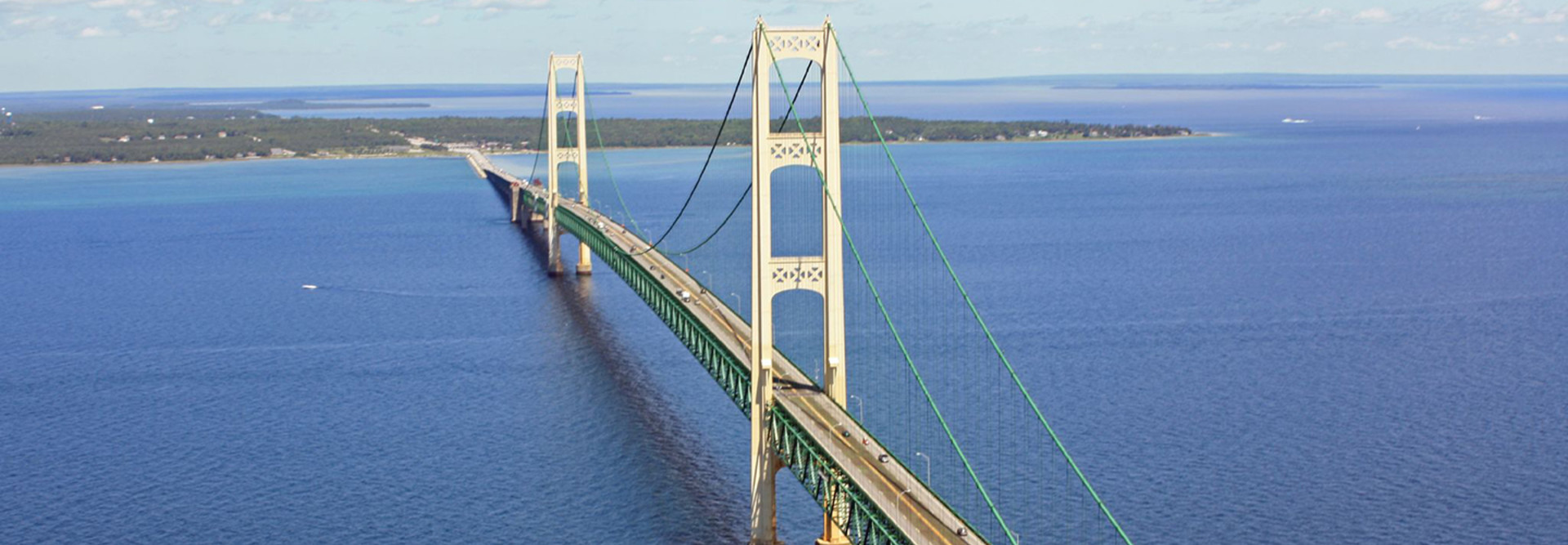New Sensors Will Monitor Michigan's Mackinac Bridge
The Mackinac Bridge, which connects the Upper Peninsula and Lower Peninsula of Michigan, has a total length of 26,372 feet. The suspension bridge opened in 1957, and at 62 years old, it is becoming more important to monitor the structure’s integrity and know when maintenance is required.
So, the Mackinac Bridge Authority (MBA) plans to install up to 2,000 tiny wireless sensors on the bridge to monitor the structure and help inform the authority of maintenance needs.
The Mackinac project is part of a wider movement to rebuild bridges with Internet of Things sensors or to add such sensors to existing bridges to monitor stresses on bridges and help inform when bridges should be inspected or repaired.
Further, U.S. governors are pushing for a sweeping federal infrastructure plan that would offer states financial incentives to rebuild and reinforce infrastructure. As StateTech recently reported:
Infrastructure resiliency depends on the deployment of modern technologies including sensors and the Internet of Things to maintain the health of transportation and electric infrastructure, and the federal government should help fund such initiatives, governors urged the White House and Congress. Experts have called for smart infrastructure that can withstand pressures such as destructive natural disasters.
The first 20 prototype infrastructure sensors on the Mackinac Bridge, which were installed beginning in 2016 and are powered simply by vibrations from traffic, proved to be durable enough and worked as expected. Now, researchers from Michigan State University and Washington University in St. Louis are ready to roll out the next phase of the deployment.
Nizar Lajnef, MSU associate professor of civil and environmental engineering, tells StateTech that the researchers plan to deploy the first new wave of sensors on the bridge in July. According to the MBA, 200 of the 2,000 sensors will be placed on the bridge by the end of 2019, and the remainder of the 2,000 will be in place in 2020, NBC25 reports.
MORE FROM STATETECH: Find out why smart cities may be key to a national infrastructure initiative.
RFID-based Sensors Will Help Monitor Mackinac Bridge
The large-scale deployment of the new low-cost sensing technology will “dramatically transform the economics of bridge preservation/management and ultimately improve the serviceability of bridges,” Lajnef says in a statement.
The researchers will also explore how the data the sensors collect could be used for improved cost-effective, condition-based maintenance of a bridge’s structural components, Lajnef says. “We are very excited that this will be the first fully instrumented bridge in the country using advanced wireless and self-powered monitoring technology,” he adds.
Lajnef tells StateTech that the sensors are based on radio-frequency identification technology but were created in-house. “We built it to our specifications,” he says, for the distance the researchers needed the signal to travel, the amount of data that needed to be sent and the rate of data transmission.
It was not feasible to collect the data via drones or boats, he adds, which is why researchers settled on using wireless sensors.
Importantly, the sensors have on-board memory, so all of the data they collect about the bridge’s condition, from information on traffic going over the bridge and even the wind, can be stored on the sensors. Researchers will be able to upload the data on demand once a month or once every two months, Lajnef says.
Several of the sensors’ features make them attractive to infrastructure managers, according to an MBA statement. Since the sensors have no external power source, they do not require battery changes or connections to power sources. The wireless transmissions also eliminate the need for wired network infrastructure.
Starting in 2016, Lajnef and WUSTL professor Shantanu Chakrabartty began deploying prototype sensors beneath the bridge as part of a pilot project sponsored by the Federal Highway Administration. Since then, more advanced versions of the self-powered sensors have been developed as a part of the National Science Foundation’s Cyber-Physical Systems program and have been successfully deployed on the bridge, according to an MBA statement.
MBA staff will help with the installation of the sensors and will provide both equipment and access to the bridge. Additionally, the MBA will own the data gathered by the sensors, “with WUSTL providing the sensor prototypes and MSU providing tools to analyze and interpret that data for bridge staff to use in guiding engineering and maintenance decisions,” the MBA says.









